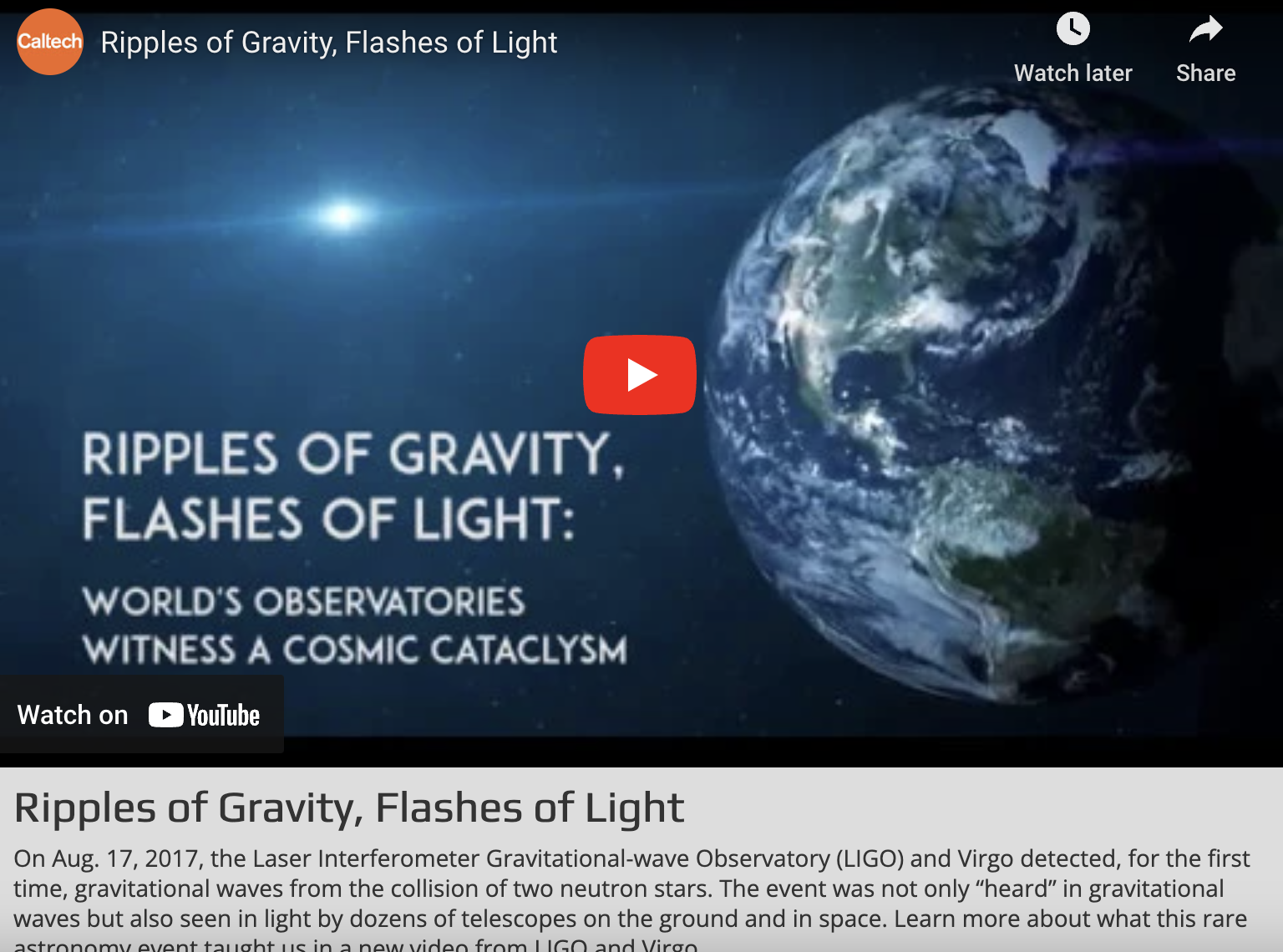Gravitational Radiation
At right are the results of a numerical simulation of a
black hole/black hole collision and the gravitational radiation
which is produced (much as the manner in which water waves are
generated by disturbances and in the manner in which EM waves are
generated by electrical charges). |
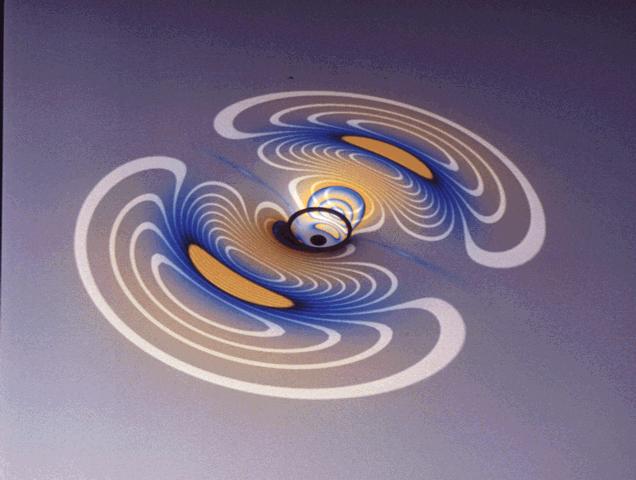
|
Reading: Chapter
22 (Neutron Stars and Black Holes)
In the 1600s, Issac Newton developed his Universal Theory of
Gravitation and his three laws of motion.
This way of looking at the Universe works quite nicely for the motions of
the planets and most of our everyday experiences. However, under certain
circumstances, this picture is inadequate. To fix-up some problems,
Albert Einstein developed his Special and
General Theories of Relativity which
brought a new persepctive to our thinking about space, time, and
gravitation.
To get a feel for some of Einstein's ideas, we must start thinking about the
space-time of the Universe. Suppose that I tell you that
Astronomy 122
meets in 100 Willamette Hall. Is this enough to get you to class?
Well, no, because I didn't tell you when the class meets,
namely, 14:00-14:50 on MWF.
In order for you to show up for class, you must know not only
where
it meets but also when it meets.
This is true for all events in the Universe;
you must know not only where the event occurs (its spatial position) but
also when the event occurs (its temporal position).
The space
and time
positions are equally important and we should
think about events in the Universe in terms of their
space-time positions.
An interesting property of this space-time is that it has
structure and is not rigid.
Question: What are some consequences of
viewing the Universe in this manner?
The path an object rolling on a table top
follows is determined by the shape of the surface (it rolls on the
table top). The table top defines the space-time for the rolling
object. For objects rolling in the
Universe, a similar idea holds in that the paths of objects
follow the shape of the shape-time.
Locally, the space-time in this room
is fairly flat and so, unless you push on an object, its free motion
(unforced motion) is in a straight line.
If I were to place a large chunk of mass into the room, the mass
would distort the shape of the space-time. In two-dimensions, this is easy
to visualize. Imagine a rubber sheet onto which
you place a bb. The bb causes a depression to form in the rubber sheet.
|
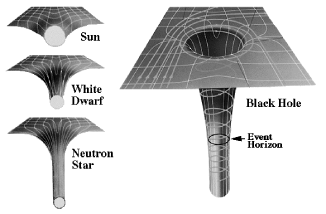
|
This is analogous to what
mass does to the structure of space-time. It causes a depression to
form so that if an object rolls toward it, it falls into the
pit and is captured. (This, by the way, is how Einstein envisioned
how gravity works.
Mass distorts the space-time causing particles to roll toward
the mass. Note that the objects follow the shape of the
space-time and in
this sense are following an unforced motion! That is, there is no
gravitational force, objects are simply following their natural motions.)
Return to the rubber sheet analogy. If I drop
a bb on the sheet and it bounces, ripples in the sheet are produced
which propagate
away from the disturbance. These ripples in the space-time are referred
to as gravitational waves.
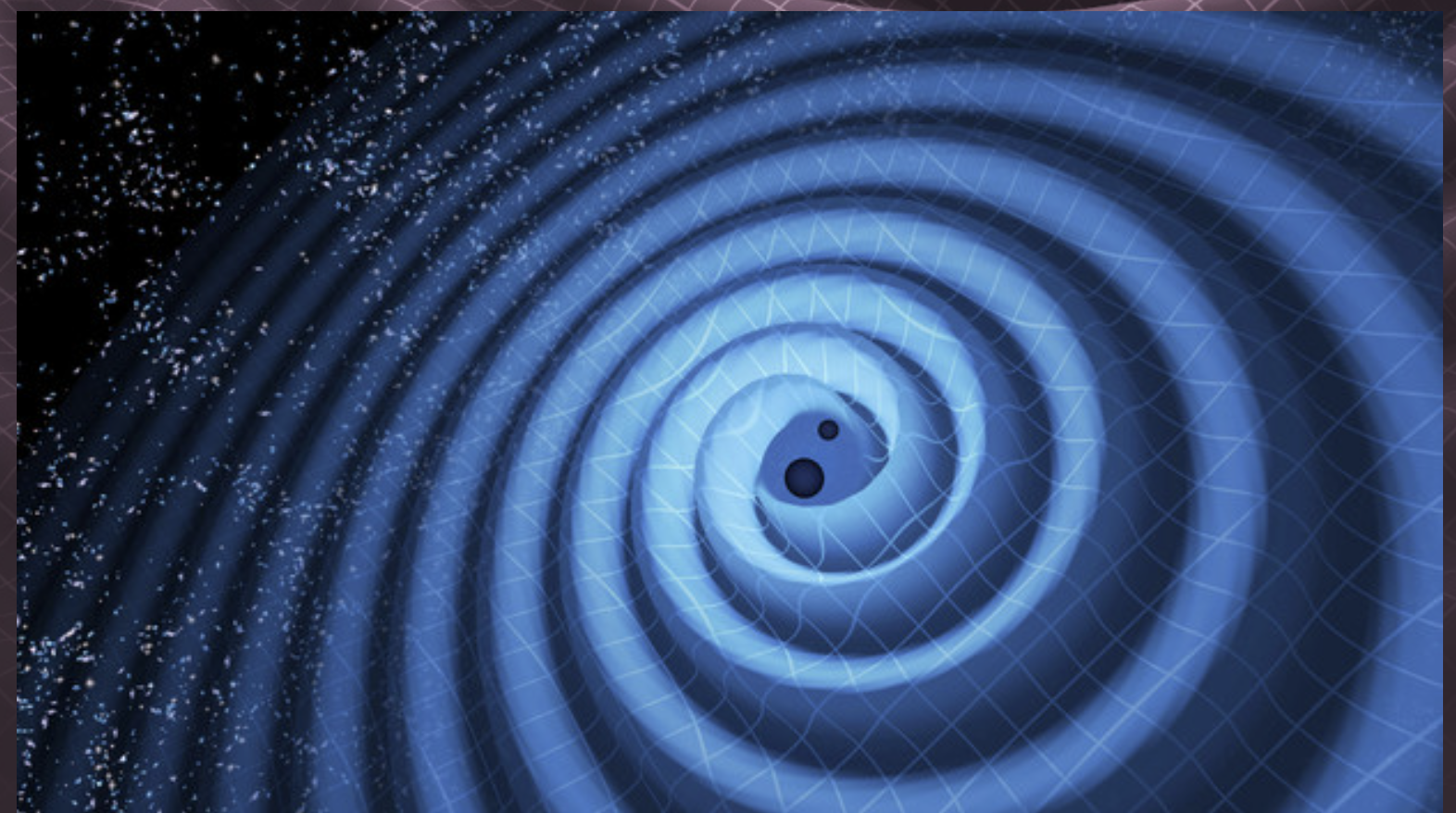
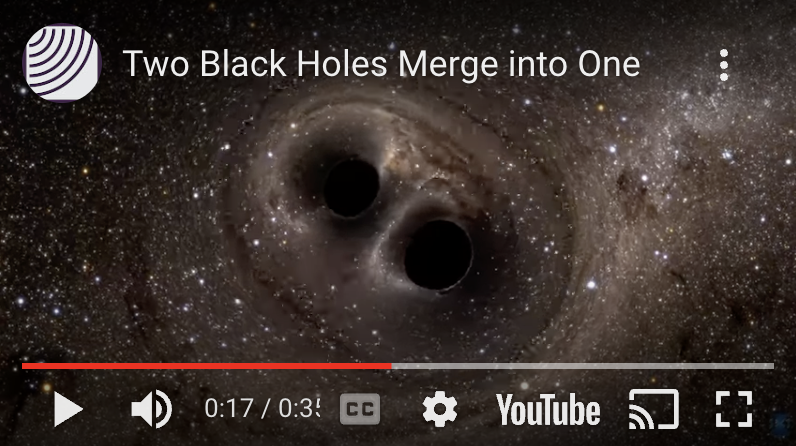
Gravitational waves from compact stars and other Celestial Objects.
To the right is shown the
Laser Interferometer Gravitational-Wave
Observatory (LIGO) located in Hanford, WA which announced the discovery
of gravitational waves in 2015 from GW150914, produced by the merger
of two orbiting
black holes (Abbott et al. 2016). This important work earned the 2017 Nobel
Prize in Physics for
Rainer Weiss, Barry C. Barish and Kip S. Thorne for "decisive
contributions to the LIGO detector and the observation of gravitational waves."
Note that there was an earlier indirect detection of gravitational waves
for which the Nobel Prize in Physics 1993 was aswarded to
Russell A. Hulse and Joseph H. Taylor Jr. for "the discovery of a new type
of pulsar, a discovery that has opened up new possibilities for the study
of gravitation."
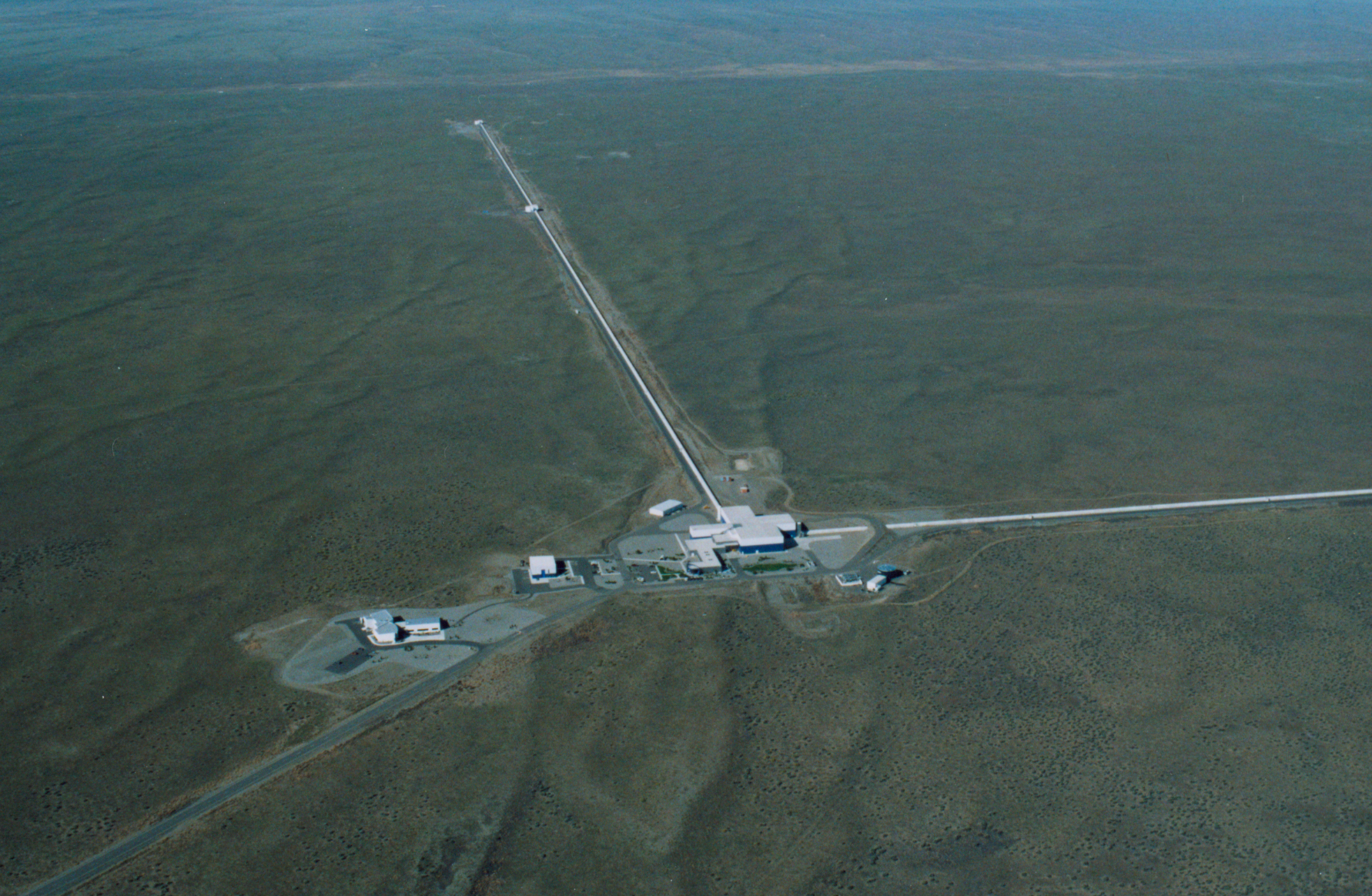
Comment: The opening of the sky to the study of grqavitational
waves was huge, but opening ot the sky to the combination of gravitational and
the Electro-magnetic (EM) spectrum and the study of other forms of
emissions from Celestial objects would be huge.
Exampales for such GW/EM sourfes are supernovae,
$gaqmma;-ray bursters (merging neutron stars
or black holes),
unstable rotating neutron stars, close binary white dwarf stars... .
The exciting discovery of gravitational
waves from merging neutron stars in the form of a γ-ray burst
has verified that indeed, gravitational waves with electromagnetic radiation
are produced by a broad range of astrophysical sources.
The recent detetion by LIGO of
a γ-ray burst source has
substantially enhanced our understanding of
the heavy element production in the Universe.
Possible sources for gravity waves are supernovae, merging neutron stars
or black holes,
unstable rotating neutron stars, ... . The exciting discovery of gravitational
waves from merging neutron stars has verified that indeed, gravitational waves
are produced by a broad range of astrophysical sources, in particualr, new
sources of gravitational waves that produced large amounts of electromagnetic
radiation.
